A Great Guide To Upgrading Your Pool Filter
The best way to relax after a long and tiring day is a soothing dip in your pool. Are we right or are we right? We are sure your answer is a big yes. Well, about 3 million Australians agree with you. That's more than 13% of the Australian population! Needless to say, it takes a lot of effort to own and maintain a swimming pool. A common problem is the malfunctioning of pool filters. If you are facing issues with your pool filter, we suggest upgrading to a new and more powerful version. Here is a helpful guide to upgrading your pool filter. Read on to know the most important steps to perform this task easily.

Types of Pool Filters
There are three types of pool filters:
1. Sand filter
2. Cartridge filter
3. Diatomaceous Earth (or D.E.) filter
Sand Filter
1. It is the most basic and traditional swimming pool filter type currently in use.
2. This device contains sand, which can filter particles of sizes up to 20 microns. Silica sand is the most used sand type. However, you can also use substitutes such as filter glass (reprocessed glass particles) or Zeosand (mineral particles usually known by the name Zeolite).
3. Sand filters are unable to filter bacteria or other microorganisms below 20 microns. It is advisable to keep the chemical constitution of the input water in mind.
4. This filter type employs a simple cleaning system. You can simply “backwash” these filters by creating a reverse water flow and directing it outwards through a wastewater line.
5. The sand needs to be replaced every five to seven years.
Cartridge Filter
1. This pool filter is the easiest to install and maintain. It is also the most used pool filter.
2. These filters use pleated cartridges that can clean particles as small as 10 microns in size. It provides better filtration compared to sand filters. Also, the quantity of wastewater is less than sand filters.
3. It is important to use the right-sized pool pump if you prefer using a cartridge filter. The pool pump needs to feed an optimum volume of water into the filter. Excess water input can damage the cartridges and does not ensure proper filtering.
4. You should remove and rinse the cartridges at an interval of six months, or you can also do it when the internal pressure rises above the baseline. The cartridges should be replaced every two to five years of installation.
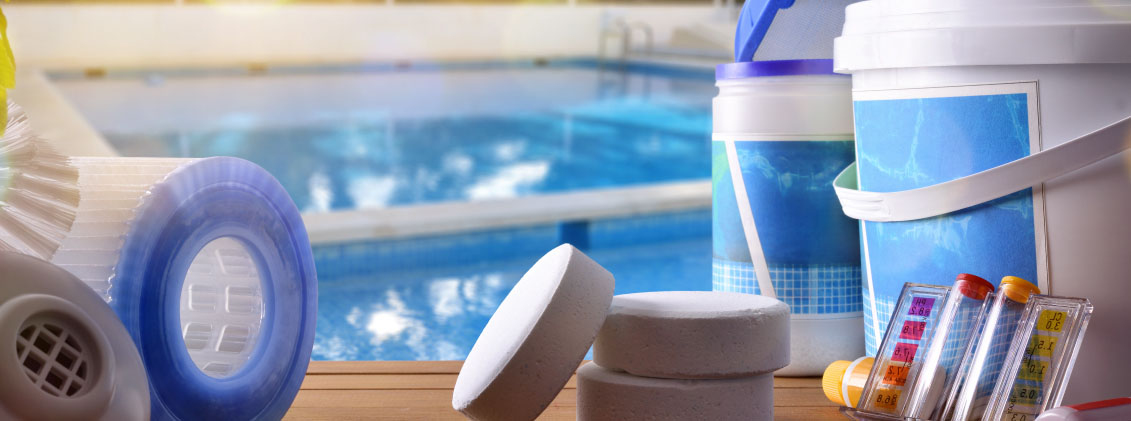
Diatomaceous Earth (D.E.) Filter:
1. These filters use fossilised diatoms (a variety of micro algae) in powder form to filter pool water.
2. The D.E. powder is coated onto a filter grid/rod. It works by trapping the contaminant particles aside as water flows uninterrupted through the pool filter.
3. D.E. filters are very efficient as they can filter particles even as small as 2 microns. It provides the best filtration possible.
4. However, these filters require the most stringent maintenance too. You would need to backwash and clean these filters each month. You would also need to rinse or soak the filter grids/rods regularly. Filter grids and rods should be replaced every five to seven years.
5. D.E. powder is a toxic carcinogen when inhaled. It is imperative to wear a mask and work very cautiously when handling D.E. filters.
Benefits of Upgrading your Pool Filter
The benefits of upgrading to a larger and more efficient filter system are as follows:
1. Over-filtered water is less of a headache compared to improperly filtered water. You will face fewer problems with water that has been filtered more than required.
2. A larger filter surface area can hold back more debris. Also, the interval between filter cleaning sessions can be extended. This will save a lot of your time and water resources.
3. High-efficiency pool filters can clean up poor water faster. Better still, these filters can prevent poor water conditions entirely. You will not have to worry about stepping into a microbe-infested pool.
4. Larger and higher-efficiency pumps do not have to run for a long time to circulate and clean the pool water. Depending on energy efficiency, this can save you a considerable amount of money on electric bills.
5. Increased water circulation also assists in distributing chlorine evenly through the pool. It helps in keeping the pool free of algae.
When to Upgrade a Pool Filter?
The answer to this question will depend on how much you use your pool. However, we have listed a few signs to look out for. These should indicate the correct time to upgrade or change your pool filter (of any type):
1. Sand filter: Filter element such as the filter glass or silica sand appears visibly dirty. Another situation arises when the mesh or collection area is overburdened with accumulated dirt.
2. Cartridge filter: When the filter cartridge is showing signs of physical damage, especially damaged or flattened cartridge pleats.
3. D.E. filter: The pressure gauge on the filter is showing abnormally high PSI readings even after thorough cleaning of the pool.
You can also consider changing out your pool filter or upgrading it after heavy pool use. For example, after a pool party. You may also need to upgrade the pool filter system after a heavy storm, rainfall or even an unusual algae bloom.
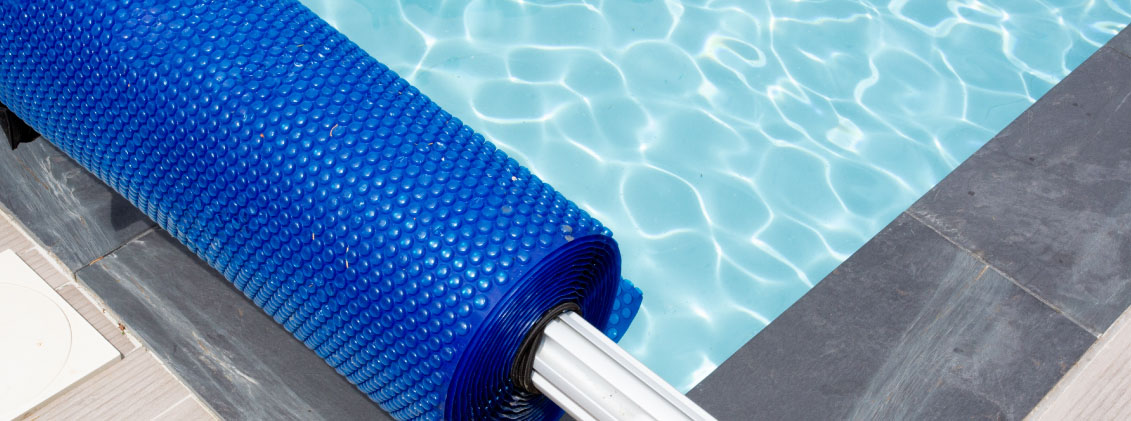
How to Upgrade a Pool Filter?
Below is an outline of the process to follow while upgrading or changing your pool filter:
1. Place the new pool filter on a solid, flat surface with accessible connections to the necessary water inlet/outlet lines. The ideal distance between the pool and filter is within six feet. Ensure that the filter is easily accessible whenever cleaning and maintenance are required.
2. Working with a pool filter often requires power tools. Ensure you switch off the pool pump and the installed filter before using any electrical tool.
3. Assemble the new pool filter and the required piping connections exactly as advised by the manufacturer in the manuals.
4. Connect the new pool filter to the correct inlet and outlet lines, both to and from the pool and the pump.
5. Double-check all connections and then power on the new filter. Ensure there are no leaks or loose water lines.
6. Check and record the initial pressure reading. When the internal pressure rises to between 8 and 10 psi above this initial reading, you should clean the new filter.
Conclusion
We hope this guide answers your questions about upgrading your pool filter. Happy swimming!
A Great Guide To Upgrading Your Pool Filter
The best way to relax after a long and tiring day is a soothing dip in your pool. Are we right or are we right? We are sure your answer is a big yes. Well, about 3 million Australians agree with you. That's more than 13% of the Australian population! Needless to say, it takes a lot of effort to own and maintain a swimming pool. A common problem is the malfunctioning of pool filters. If you are facing issues with your pool filter, we suggest upgrading to a new and more powerful version. Here is a helpful guide to upgrading your pool filter. Read on to know the most important steps to perform this task easily.
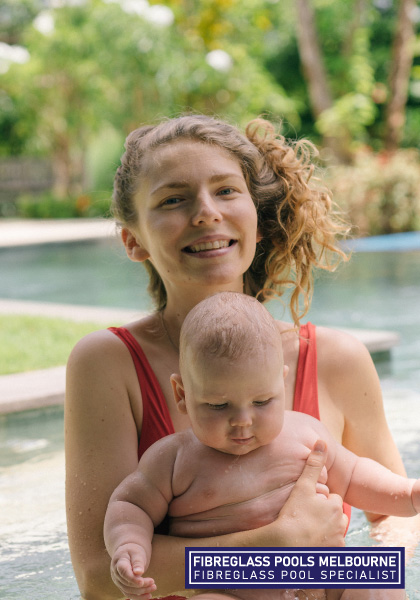
Types of Pool Filters
There are three types of pool filters:
1. Sand filter
2. Cartridge filter
3. Diatomaceous Earth (or D.E.) filter
Sand Filter
1. It is the most basic and traditional swimming pool filter type currently in use.
2. This device contains sand, which can filter particles of sizes up to 20 microns. Silica sand is the most used sand type. However, you can also use substitutes such as filter glass (reprocessed glass particles) or Zeosand (mineral particles usually known by the name Zeolite).
3. Sand filters are unable to filter bacteria or other microorganisms below 20 microns. It is advisable to keep the chemical constitution of the input water in mind.
4. This filter type employs a simple cleaning system. You can simply “backwash” these filters by creating a reverse water flow and directing it outwards through a wastewater line.
5. The sand needs to be replaced every five to seven years.
Cartridge Filter
1. This pool filter is the easiest to install and maintain. It is also the most used pool filter.
2. These filters use pleated cartridges that can clean particles as small as 10 microns in size. It provides better filtration compared to sand filters. Also, the quantity of wastewater is less than sand filters.
3. It is important to use the right-sized pool pump if you prefer using a cartridge filter. The pool pump needs to feed an optimum volume of water into the filter. Excess water input can damage the cartridges and does not ensure proper filtering.
4. You should remove and rinse the cartridges at an interval of six months, or you can also do it when the internal pressure rises above the baseline. The cartridges should be replaced every two to five years of installation.
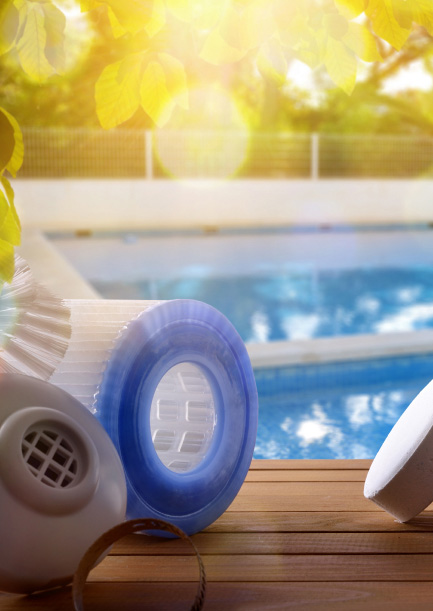
Diatomaceous Earth (D.E.) Filter:
1. These filters use fossilised diatoms (a variety of micro algae) in powder form to filter pool water.
2. The D.E. powder is coated onto a filter grid/rod. It works by trapping the contaminant particles aside as water flows uninterrupted through the pool filter.
3. D.E. filters are very efficient as they can filter particles even as small as 2 microns. It provides the best filtration possible.
4. However, these filters require the most stringent maintenance too. You would need to backwash and clean these filters each month. You would also need to rinse or soak the filter grids/rods regularly. Filter grids and rods should be replaced every five to seven years.
5. D.E. powder is a toxic carcinogen when inhaled. It is imperative to wear a mask and work very cautiously when handling D.E. filters.
Benefits of Upgrading your Pool Filter
The benefits of upgrading to a larger and more efficient filter system are as follows:
1. Over-filtered water is less of a headache compared to improperly filtered water. You will face fewer problems with water that has been filtered more than required.
2. A larger filter surface area can hold back more debris. Also, the interval between filter cleaning sessions can be extended. This will save a lot of your time and water resources.
3. High-efficiency pool filters can clean up poor water faster. Better still, these filters can prevent poor water conditions entirely. You will not have to worry about stepping into a microbe-infested pool.
4. Larger and higher-efficiency pumps do not have to run for a long time to circulate and clean the pool water. Depending on energy efficiency, this can save you a considerable amount of money on electric bills.
5. Increased water circulation also assists in distributing chlorine evenly through the pool. It helps in keeping the pool free of algae.
When to Upgrade a Pool Filter?
The answer to this question will depend on how much you use your pool. However, we have listed a few signs to look out for. These should indicate the correct time to upgrade or change your pool filter (of any type):
1. Sand filter: Filter element such as the filter glass or silica sand appears visibly dirty. Another situation arises when the mesh or collection area is overburdened with accumulated dirt.
2. Cartridge filter: When the filter cartridge is showing signs of physical damage, especially damaged or flattened cartridge pleats.
3. D.E. filter: The pressure gauge on the filter is showing abnormally high PSI readings even after thorough cleaning of the pool.
You can also consider changing out your pool filter or upgrading it after heavy pool use. For example, after a pool party. You may also need to upgrade the pool filter system after a heavy storm, rainfall or even an unusual algae bloom.
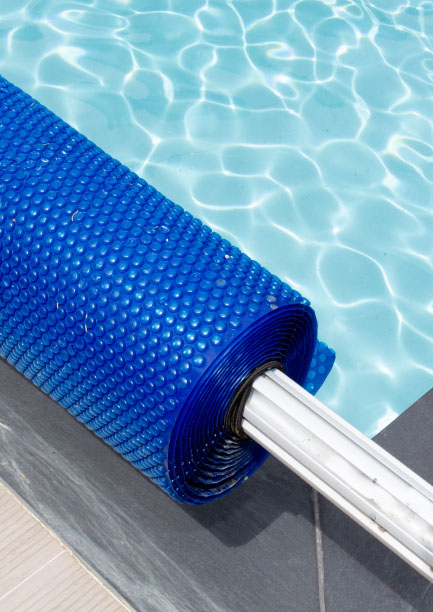
How to Upgrade a Pool Filter?
Below is an outline of the process to follow while upgrading or changing your pool filter:
1. Place the new pool filter on a solid, flat surface with accessible connections to the necessary water inlet/outlet lines. The ideal distance between the pool and filter is within six feet. Ensure that the filter is easily accessible whenever cleaning and maintenance are required.
2. Working with a pool filter often requires power tools. Ensure you switch off the pool pump and the installed filter before using any electrical tool.
3. Assemble the new pool filter and the required piping connections exactly as advised by the manufacturer in the manuals.
4. Connect the new pool filter to the correct inlet and outlet lines, both to and from the pool and the pump.
5. Double-check all connections and then power on the new filter. Ensure there are no leaks or loose water lines.
6. Check and record the initial pressure reading. When the internal pressure rises to between 8 and 10 psi above this initial reading, you should clean the new filter.
Conclusion
We hope this guide answers your questions about upgrading your pool filter. Happy swimming!


